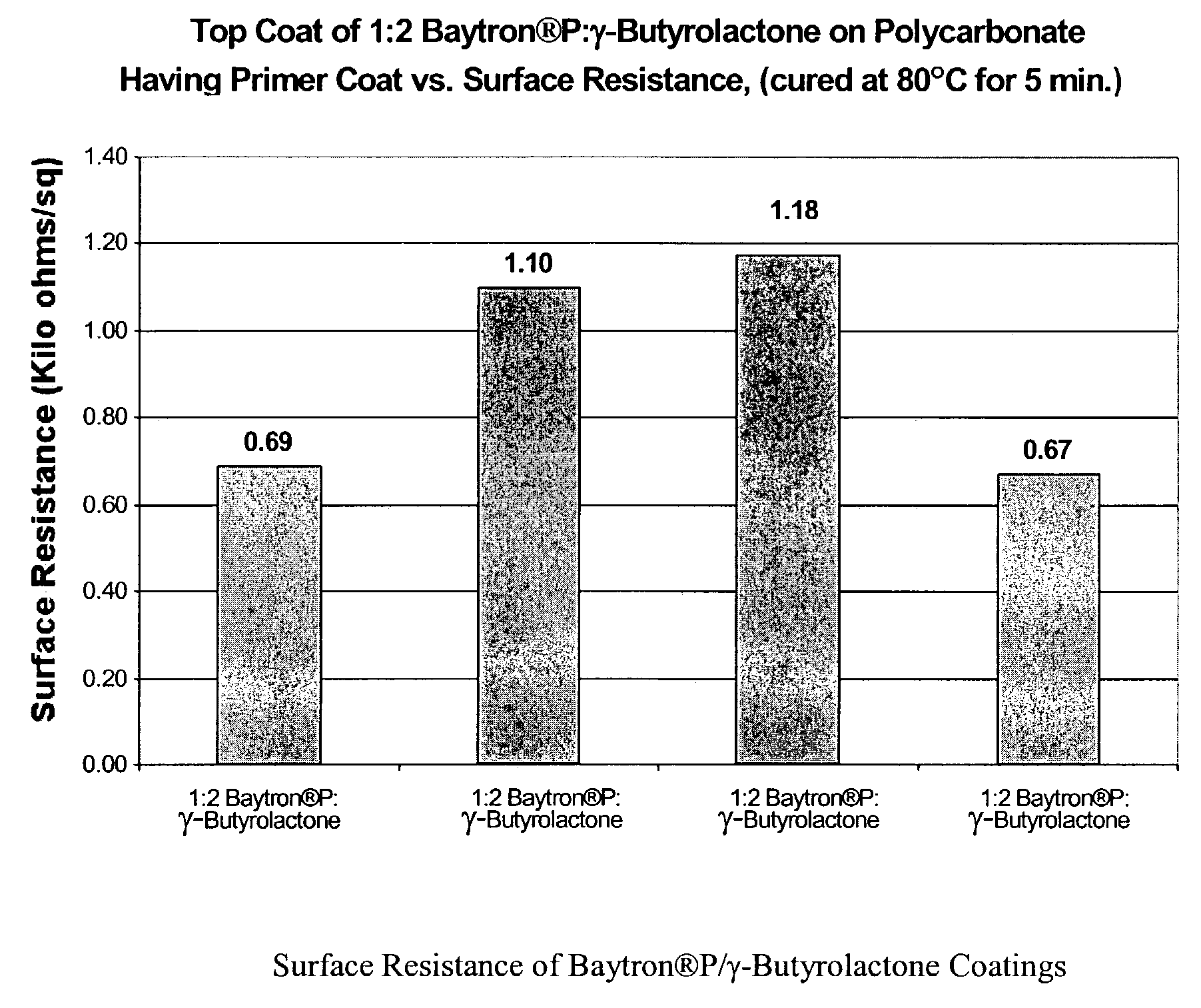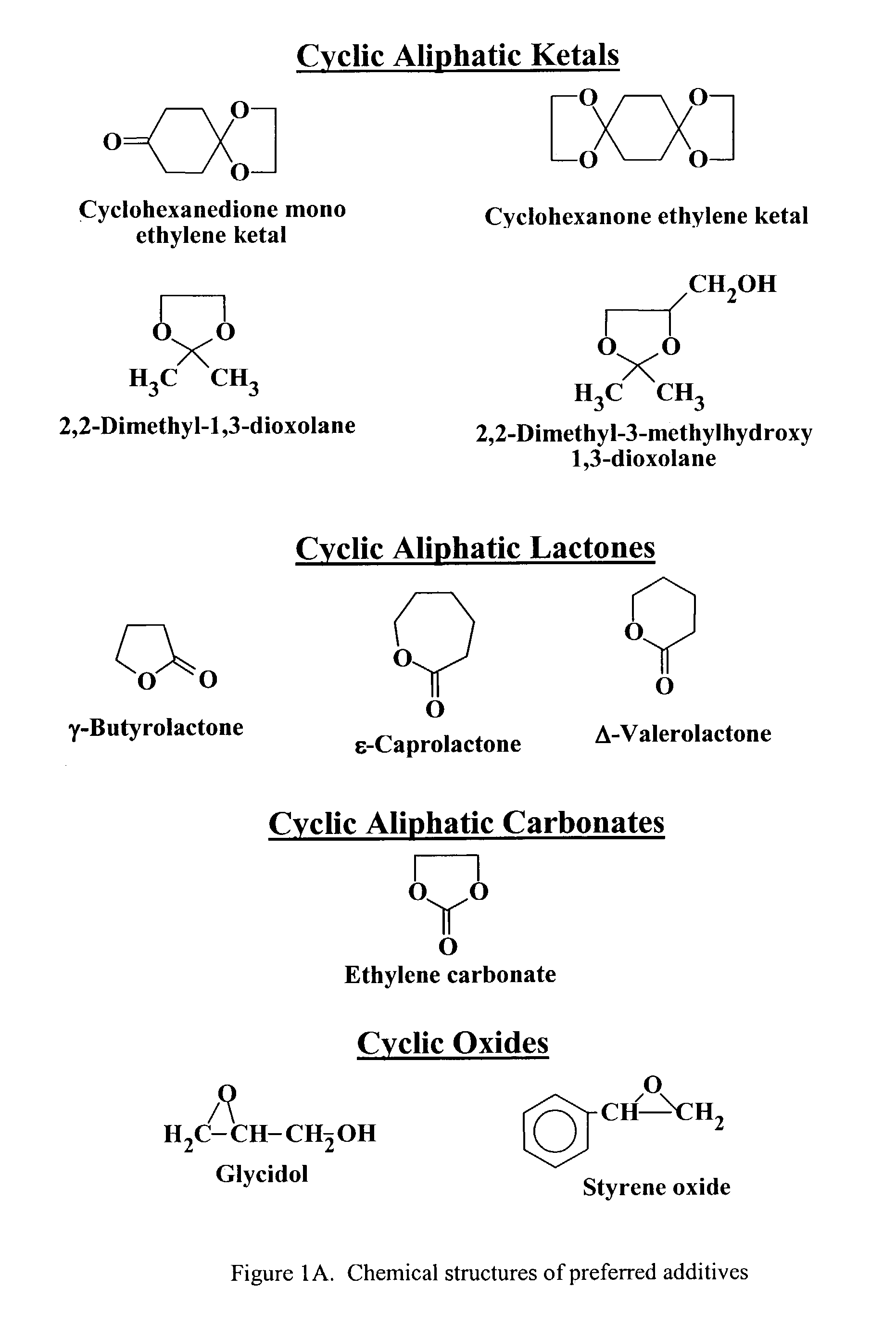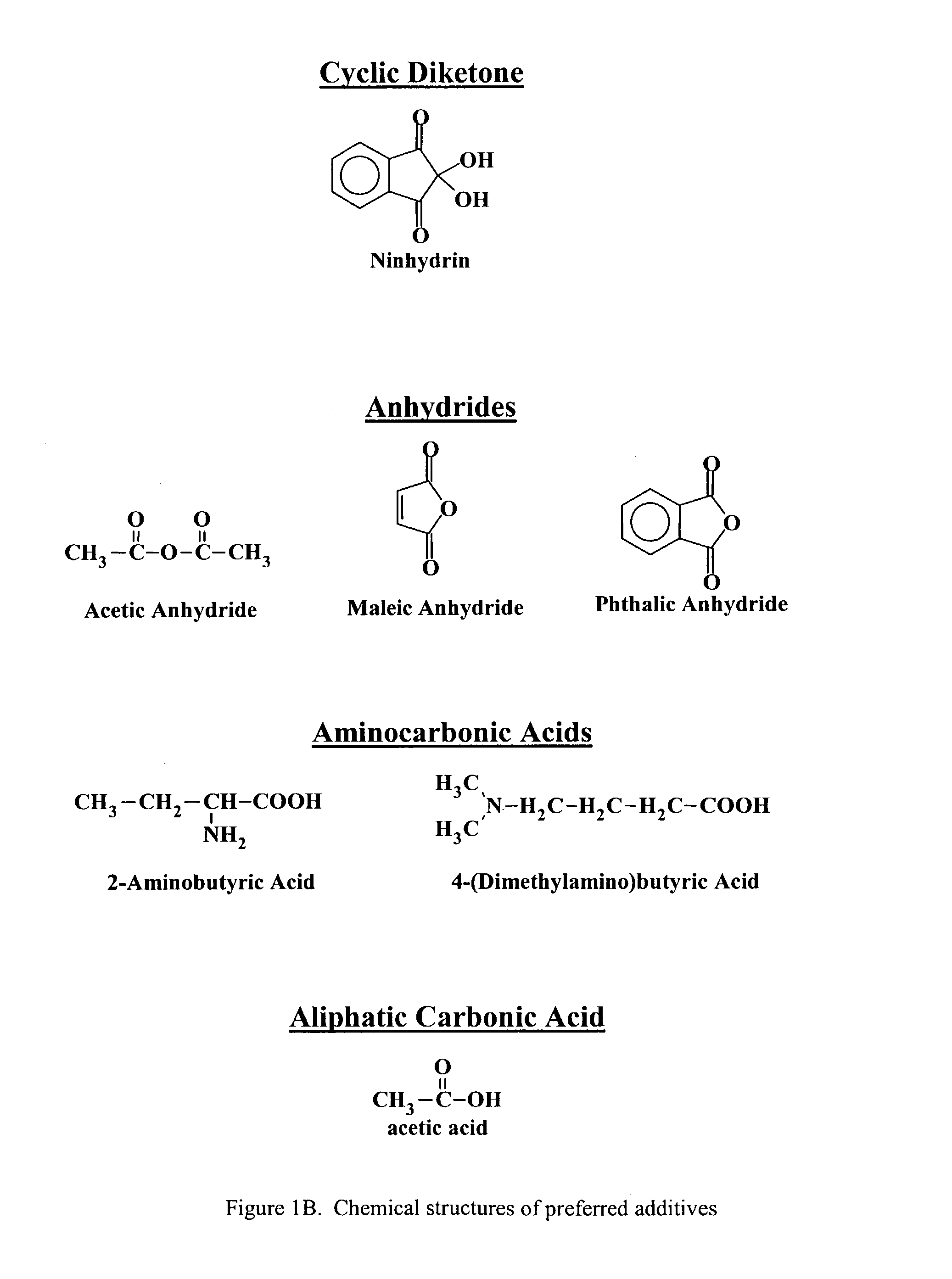Mixtures comprising thiophene/anion dispersions and certain additives for producing coatings exhibiting improved conductivity, and methods related thereto
a technology of anion dispersions and additives, which is applied in the field of electrically conductive organic polymers, can solve the problems of inability to calculate the volume resistivity of these coatings, the inability to elucidate the additives that may bring about this increase in electrical conductivity, and the major disadvantage of high temperature treatment, etc., to achieve the effect of improving the combination of processing characteristics, electrical conductivity and optical transparency
- Summary
- Abstract
- Description
- Claims
- Application Information
AI Technical Summary
Benefits of technology
Problems solved by technology
Method used
Image
Examples
example 1
Preparation of Comparative Example of Baytron®P / D-Sorbitol Coatings
[0094]Four different concentrations of Baytron®P / D-sorbitol aqueous mixtures were prepared, in accordance to U.S. Pat. No. 5,766,515, by adding the appropriate amount of D-sorbitol to Baytron®P aqueous dispersion. The D-sorbitol was added as a solid and mixed for several minutes at room temperature. The Baytron®P:D-sorbitol mixtures were prepared at concentrations of 1:1, 1:2, 1:6 and 1:12 by weight.
[0095]The following procedures were followed for each of the examples described herein (i.e., Examples 1–23). The concentration of each component in the mixture is based on the amount of poly(3,4-ethylenedioxy)thiophene / PSS in the Baytron®P dispersion and the selected ratio of the components. The acidity of the resulting mixture is measured using pH indicator paper. The mixture is subsequently used to produce thin coatings via a spin casting technique. The coatings are dried under different conditions. The surface resisti...
example 2
Preparation of Baytron®P / 2,2-Dimethyl-1,3-Dioxolane Coatings
[0098]Five different concentrations of Baytron®P / 2,2-dimethyl-1,3-dioxolane aqueous mixtures were prepared by adding the appropriate amount of 2,2-dimethyl-1,3-dioxolane to Baytron®P aqueous dispersion. The 2,2-dimethyl-1,3-dioxolane was added dropwise, and mixed for several minutes at room temperature. The Baytron®P:2,2-dimethyl-1,3-dioxolane mixtures were prepared at concentrations of 1:1, 1:6, 1:10, 1:20 and 1:50 by weight.
[0099]The relevant data for this example is presented in Table 2 hereinabove.
example 3
Preparation of Baytron®P / Cyclohexanone Ethylene Ketal Coatings
[0100]Two different concentrations of Baytron®P / cyclohexanone ethylene ketal aqueous mixtures were prepared by adding the appropriate amount of cyclohexanone ethylene ketal to Baytron®P aqueous dispersion. The cyclohexanone ethylene ketal was added dropwise, and mixed for several minutes at room temperature. The Baytron®P: cyclohexanone ethylene ketal mixtures were prepared at concentrations of 1:1 and 1:10 by weight.
[0101]The relevant data for this example is presented in Table 3 hereinabove.
PUM
| Property | Measurement | Unit |
|---|---|---|
| glass transition temperature | aaaaa | aaaaa |
| temperature | aaaaa | aaaaa |
| temperature | aaaaa | aaaaa |
Abstract
Description
Claims
Application Information
 Login to View More
Login to View More - R&D
- Intellectual Property
- Life Sciences
- Materials
- Tech Scout
- Unparalleled Data Quality
- Higher Quality Content
- 60% Fewer Hallucinations
Browse by: Latest US Patents, China's latest patents, Technical Efficacy Thesaurus, Application Domain, Technology Topic, Popular Technical Reports.
© 2025 PatSnap. All rights reserved.Legal|Privacy policy|Modern Slavery Act Transparency Statement|Sitemap|About US| Contact US: help@patsnap.com



